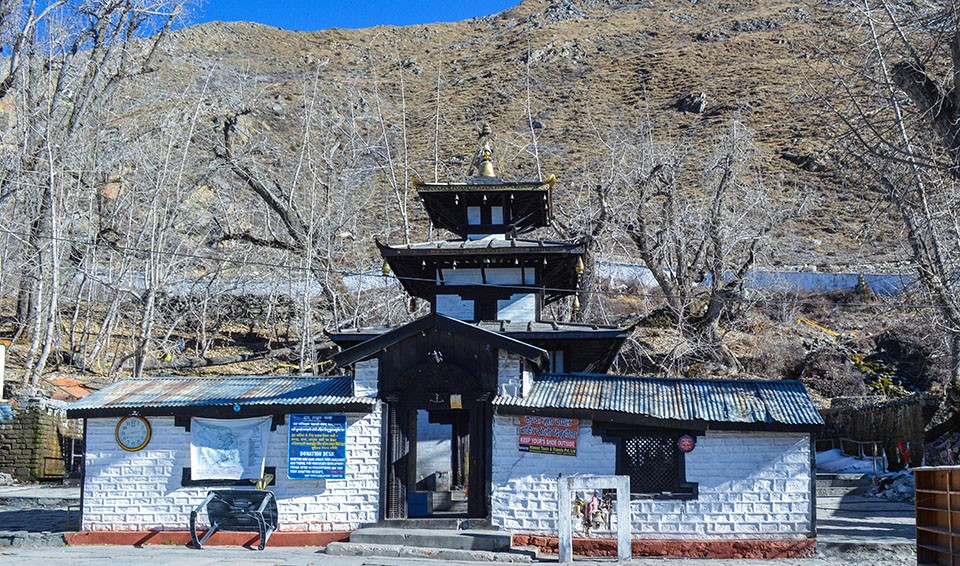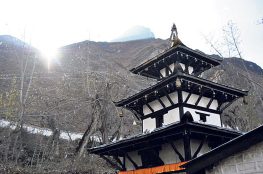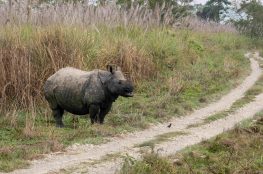Duration
7 Days
Max Altitude
3,710 meters
Difficulty
Moderate
Group Size
Min 2 Pax
Accommodation
3 star
Best Season
Mar-Apr / Oct-Nov
KATHMANDU MUKTINATH TOUR
The Kathmandu-Pokhara-Muktinath tour offers a captivating journey through Nepal’s rich cultural heritage and stunning natural landscapes. Starting in Kathmandu, the capital city, travelers can explore ancient temples, bustling markets, and UNESCO World Heritage Sites like Swayambhunath and Pashupatinath. The tour then moves to Pokhara, known for its serene lakes, including Phewa Lake, and breathtaking views of the Annapurna and Dhaulagiri mountain ranges. The final leg of the journey takes you to Muktinath, a sacred pilgrimage site nestled in the Himalayas, revered by both Hindus and Buddhists. Hindus consider it a place of salvation (Moksha) where visiting the temple and bathing in the 108 water spouts can cleanse sins and free the soul. For Buddhists, the temple is associated with Guru Rinpoche (Padmasambhava), who is believed to have meditated there.
The tour combines spiritual exploration with the beauty of Nepal’s diverse geography, making it an unforgettable experience.
Highlights
- Sacred Muktinath Temple
- Religious & UNESCO World heritage sites exploration in Kathmandu
- Manakamana Temple accessible via a scenic cable car ride.
- Picturesque Pokhara sightseeing
- Scenic Pokhara-Jomsom flight
- Stunning views of the Himalayas, including the Annapurna and Dhaulagiri mountain ranges
- Multi ethnic people, culture exploration
Outline Itinerary
Day 01: Arrive in Kathmandu
Day 02: Kathmandu Sightseeing
Day 03: Drive to Pokhara. En-route visit Manakamana Temple
Day 04: Fly to Jomsom and drive to Muktinath
Day 05: Fly back to Pokhara. Pokhara Sightseeing
Day 06: Drive back to Kathmandu
Day 07: Departure
Day 01: Kathmandu Arrival
Upon arrival in Kathmandu Airport, One of our representative will meet and greet you at Tribhuwan International Airport and transfer you to your hotel. Overnight at hotel in Kathmandu.
Day 02: Kathmandu Sightseeing
Early morning visit Pashupatinath Temple. Later, you will be visiting Swoyambhunath Stupa (Monkey Temple), Bouddhanath Stupa, Kathmandu Durbar square and Jalanarayan Temple (Sleeping Vishnu in the water). Drive back to Hotel. Overnight in Kathmandu Hotel.
Day 03: Kathmandu- Pokhara (about 210 km, 6/7 hrs drive)
After Breakfast, drive to Pokhara. En route, visit the Manakamana Temple via cable car, with an additional cost of INR 670 (optional), payable directly at the station. The cable car ride offers breathtaking views of hills, mountains, forests, and small farming villages, providing a unique experience of riding through the clouds. Overnight at hotel in Pokhara.
Day 04: Fly to Jomsom(2700m) and Visit Muktinath Temple (3710m)
After breakfast, fly to Jomsom (about 20 mins). Arrive in Jomsom Airport. Transfer to Hotel. Short walk to Jeep stand (10/15 mins). Drive to Muktinath by Jeep (about 20 km, 1 hr drive). Take off from Jeep and walk up (30/40 mins) to Muktinath Temple. OR You can take pony ride. Arrive in Temple. Muktinath is god of Salvation. It holds great significance for all spiritual people in the south Asian sub-continent. Have darshan and worship, walk back to Jeep station and drive back to Jomsom. Overnight in Jomsom Hotel.
Day 05: Fly back to Pokhara, Pokhara Sightseeing
Early Morning transfer to Jomsom Airport for a flight to Pokhara. After a short break, proceed for a sightseeing tour in Pokhara, which includes visits to Bindhyabasini Temple, Davis Fall, Seti River Gorge, Gupteshwor Cave, Barahi Temple, and later boat ride at Fewa Lake on your own. Overnight at hotel in Pokhara.
Day 06: Pokhara- Kathmandu
After breakfast, drive back to Kathmandu. Upon arrive in Kathmandu; transfer to Hotel for check-in. Leisure day. Overnight at hotel in Kathmandu.
Day 07: Departure
After breakfast, free till departure. Later, on time transfer to International Airport for onward destination.
- Hotel based on twin sharing w/ Breakfast
- Transportation by Private vehicle
- Air tickets for Pokhara-Jomsom-Pokhara
- ACAP permit fee
- All current government taxes as applicable
- Monuments entrance fees as mentioned in the program
- Tour Guide
- International Airfare & Airport tax
- Insurance Fee
- Lunch & Dinner
- Manakamana Cable Car tickets
- Boat ride fee on Phewa Lake
- Expenses of personal nature such as bar bills, communication charges, laundry, tips etc.
- Cost arising out of flight cancellation/road blockades/landslides/riots and events beyond our control and
- Any other expenses not mentioned in the above cost
Best Time to Visit: March to May and September to November for pleasant weather and clear views.
Permits and Fees: Obtain necessary permits (TIMS and Annapurna Conservation Area Permit) for Muktinath.
Health and Safety: Carry essential medications, stay hydrated, and be prepared for altitude adjustments.
What to Bring: Warm clothing, comfortable walking shoes, a hat, sunscreen, camera, and personal toiletries.
Meals: Include breakfast in the hotel. Lunch and dinner are typically at local restaurants or hotels, offering a mix of local and international cuisine.
Local Currency: Nepalese Rupee (NPR). Carry some cash as card facilities might be limited in remote areas.
Language: English is commonly spoken in tourist areas, but learning a few basic Nepali phrases can be helpful.
Local Customs: Respect local customs and traditions, especially when visiting religious sites.
What is the best time to visit Muktinath?
The best time to visit is from March to May and September to November, when the weather is pleasant and clear.
Are there any permits required for Muktinath?
Yes, you will need to obtain the Annapurna Conservation Area Permit (ACAP) and the TIMS (Trekkers' Information Management System) card. These can be obtained in Kathmandu or Pokhara.
Do Indian citizens need a visa to visit Muktinath?
Indian citizens do not require a visa to enter Nepal. They can enter Nepal with a valid Indian passport or a government-issued photo ID (like a voter ID card) for stays of up to 90 days.
How difficult is the journey?
The tour involves moderate physical activity, including some hiking, but it is accessible for most people.
What should I pack?
Essentials include warm clothing, comfortable trekking shoes, a hat, sunscreen, and personal medication.
Is altitude sickness a concern?
Muktinath is at 3,710 meters, so acclimatization and staying hydrated are crucial to prevent altitude sickness.
Are there any religious rituals to observe?
Visitors can perform a traditional puja and take a holy bath in the 108 water spouts and two sacred ponds at Muktinath Temple.
What accommodations are available?
Accommodations range from basic lodges to more comfortable hotels in places like Pokhara and Jomsom.
How to reach Muktinath?
The tour usually involves a flight from Pokhara to Jomsom, followed by a jeep ride or a trek to Muktinath. If you need more specific details or have additional questions, feel free to ask!
How long is the flight?
The flight duration is approximately 20-25 minutes.
What is the baggage allowance?
Typically, the baggage allowance is 15 kg per passenger, including hand luggage. Excess baggage may incur additional charges.
Are flights often delayed or canceled?
Yes, due to weather conditions, especially in the monsoon season, flights can be delayed or canceled.
What should I do in case of cancellation?
Have a buffer day in your itinerary, and be prepared to stay an extra night in Pokhara or Jomsom. Alternatives include road transport, though it takes longer.




